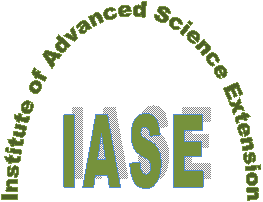International
ADVANCED AND APPLIED SCIENCES
EISSN: 2313-3724, Print ISSN: 2313-626X
Frequency: 12
![]()
Volume 12, Issue 8 (August 2025), Pages: 70-79
----------------------------------------------
Original Research Paper
Enhancing market access and consumer engagement through digital marketing in the agricultural sector
Author(s):
Affiliation(s):
Department of Business Administration, College of Business, University of Bisha, Bisha 61922, Saudi Arabia
Full text
* Corresponding Author.
 Corresponding author's ORCID profile: https://orcid.org/0009-0005-3649-430X
Corresponding author's ORCID profile: https://orcid.org/0009-0005-3649-430X
Digital Object Identifier (DOI)
https://doi.org/10.21833/ijaas.2025.08.007
Abstract
This study investigates the role of digital marketing strategies in improving market access and consumer awareness among producers in Egypt’s black honey (molasses honey) sector. With market dynamics and consumer behavior increasingly shaped by digital transformation, understanding these relationships is critical for the agricultural industry. Data were collected through surveys of 50 stakeholders from 13 molasses honey companies using purposive sampling to include marketing managers, production supervisors, and quality assurance officers. Multiple regression analysis was used to explore the relationships between digital marketing strategies, regulatory compliance, and stakeholder collaboration (independent variables) and market access (dependent variable). The results showed that digital marketing strategies significantly enhanced market access (coefficient = 0.35, 99% confidence level) and that consumer awareness was a strong predictor (coefficient = 0.28, 95% confidence level). Regulatory compliance and stakeholder collaboration also had positive effects, with regulatory compliance approaching significance (p = 0.080). Mediation analysis confirmed that both regulatory compliance and collaboration mediated the relationship between digital marketing and market access. As one of the first studies in Egypt to explore these links in the agricultural sector, this research provides new insights into how producers can improve visibility and accessibility in competitive markets. The findings highlight the importance of investing in digital marketing initiatives and fostering collaboration to strengthen market performance. Policymakers are encouraged to support producers in building digital capabilities and promoting partnerships to enhance competitiveness and adaptability in a rapidly changing environment.
© 2025 The Authors. Published by IASE.
This is an
Keywords
Digital marketing, Market access, Consumer awareness, Regulatory compliance, Stakeholder collaboration
Article history
Received 9 March 2025, Received in revised form 1 July 2025, Accepted 8 July 2025
Acknowledgment
The authors are thankful to the Deanship of Graduate Studies and Scientific Research at the University of Bisha for supporting this work through the Fast-Track Research Support Program.
Compliance with ethical standards
Ethical considerations
Ethical approval for the study was obtained prior to data collection. Participants were fully informed about the research objectives, data confidentiality, and their voluntary participation. Written informed consent was secured, and participants were reassured of their right to withdraw at any point without consequences.
Conflict of interest: The author(s) declared no potential conflicts of interest with respect to the research, authorship, and/or publication of this article.
Citation:
Awad A (2025). Enhancing market access and consumer engagement through digital marketing in the agricultural sector. International Journal of Advanced and Applied Sciences, 12(8): 70-79
Figures
Tables
Table 1 Table 2 Table 3 Table 4 Table 5 Table 6 Table 7 Table 8 Table 9 Table 10 Table 11
----------------------------------------------
References (12)
- Birner R, Daum T, and Pray C (2021). Who drives the digital revolution in agriculture? A review of supply‐side trends, players and challenges. Applied Economic Perspectives and Policy, 43(4): 1260-1285. https://doi.org/10.1002/aepp.13145 [Google Scholar]
- Bucci G, Bentivoglio D, Finco A, and Belletti M (2019). Exploring the impact of innovation adoption in agriculture: how and where precision agriculture technologies can be suitable for the Italian farm system? IOP Conference Series: Earth and Environmental Science, 275: 012004. https://doi.org/10.1088/1755-1315/275/1/012004 [Google Scholar]
- Cárceles Rodríguez B, Durán-Zuazo VH, Soriano Rodríguez M, García-Tejero IF, Gálvez Ruiz B, and Cuadros Tavira S (2022). Conservation agriculture as a sustainable system for soil health: A review. Soil Systems, 6(4): 87. https://doi.org/10.3390/soilsystems6040087 [Google Scholar]
- de Olde EM, Carsjens GJ, and Eilers CH (2017). The role of collaborations in the development and implementation of sustainable livestock concepts in the Netherlands. International Journal of Agricultural Sustainability, 15(2): 153-168. https://doi.org/10.1080/14735903.2016.1193423 [Google Scholar]
- Hrustek L (2020). Sustainability driven by agriculture through digital transformation. Sustainability, 12(20): 8596. https://doi.org/10.3390/su12208596 [Google Scholar]
- Huet JC, Bougueroua L, Kriouile Y, Wegrzyn-Wolska K, and Ancourt C (2022). Digital transformation of beekeeping through the use of a decision making architecture. Applied Sciences, 12(21): 11179. https://doi.org/10.3390/app122111179 [Google Scholar]
- Huq MM, Farhana K, and Rahman A (2017). Application of mobile phone in agricultural marketing in Bangladesh. IOSR Journal of Business and Management, 19(1): 77-82. https://doi.org/10.9790/487X-1901077782 [Google Scholar]
- Long TB, Blok V, and Poldner K (2017). Business models for maximising the diffusion of technological innovations for climate-smart agriculture. International Food and Agribusiness Management Review, 20(1): 5-24. https://doi.org/10.22434/IFAMR2016.0081 [Google Scholar]
- Purwanti I, Lailyningsih DRN, and Suyanto UY (2022). Digital marketing capability and MSMEs performance: Understanding the moderating role of environmental dynamism. Jurnal Manajemen Teori dan Terapan, 15(3): 433-448. https://doi.org/10.20473/jmtt.v15i3.39238 [Google Scholar]
- Sengupta U and Kim HM (2021). Meeting changing customer requirements in food and agriculture through the application of blockchain technology. Frontiers in Blockchain, 4: 613346. https://doi.org/10.3389/fbloc.2021.613346 [Google Scholar]
- Sidibé A, Olabisi LS, Doumbia H, Touré K, and Niamba CA (2021). Barriers and enablers of the use of digital technologies for sustainable agricultural development and food security: Learning from cases in Mali. Elementa: Science of the Anthropocene, 9(1): 00106. https://doi.org/10.1525/elementa.2020.00106 [Google Scholar]
- Tsvetkov I, Atanassov A, and Vlahova et al. (2018). Plant organic farming research–current status and opportunities for future development. Biotechnology and Biotechnological Equipment, 32(2): 241-260. https://doi.org/10.1080/13102818.2018.1427509 [Google Scholar]

